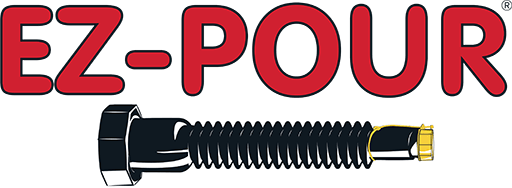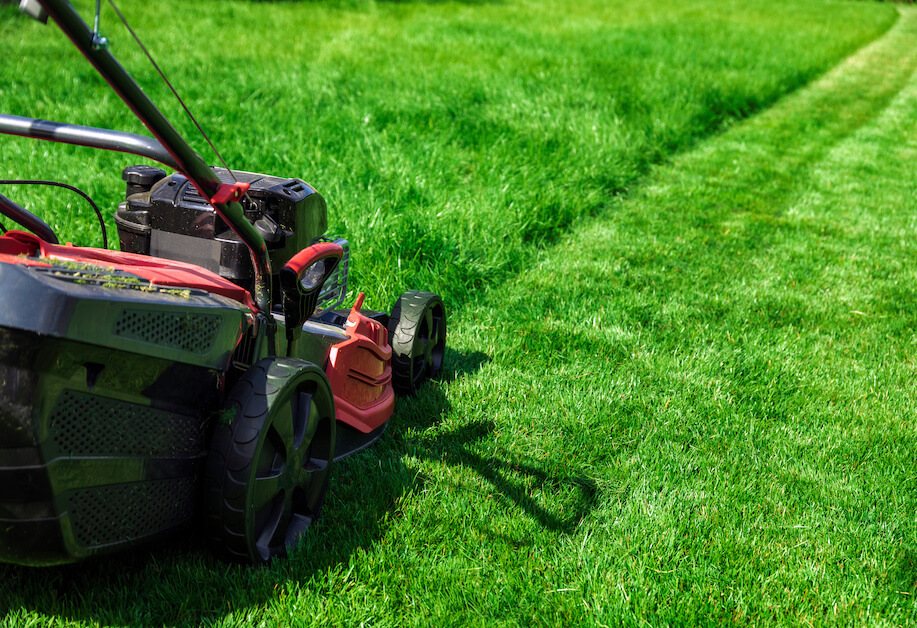Mowing a lawn takes technique! To get a professional-looking lawn means keeping up with vital maintenance, like knowing when, how short, and in which direction to mow.
You also have to know how to combine those best practices with mowing patterns that show all the effort and care you put into keeping your lawn and property healthy and looking good.
Keep reading to learn which mowing techniques make a pristine lawn.
The Benefits of Lawn Maintenance
When it comes to lawn maintenance, experts at Kemper Center for Home Gardening of the Missouri Botanical Garden stress the importance of effective mowing practices, stating that “…mowing is a weekly practice required to keep control over the grass height and
prevent the lawn from going to seed.”
Your mowing schedule depends on lawn type and growth rate at different points during the mowing season.
- Midwest Mowing Season Time Range:
Late March/Early April – Late October/Early November
If your lawn’s grass is in its high-growth period, you may need to mow multiple times a week to maintain an ideal grass height, promoting healthy grass and preventing your lawn from going into seed.
Proper Grass Height
A healthy grass height helps combat water stress (extreme heat and drought), frustrating weeds and wild grass growth, and effectively prevents insect and disease threats.
During the midsummer portion of the mowing season, do not mow your grass shorter than 2 – 2.5 inches and shorter than 3 – 3.5 inches during drought periods. Experts also advise never to cut more than 1/3 of your lawn’s pre-cut height to avoid weakening the grass blade stems.
Just before the spring green-up and at the tail end of the mowing season, warm-grass lawns thrive the best if cut shorter (to about 1 – 2 inches) than cool-grass lawns, helping to:
- Facilitate Leaf Removal,
- Prevent Matting From Snow,
- Expedite The Spring Green-Up.
Professional Mowing Techniques
1. Switch Directions
Each time you mow your lawn, switch to a different direction than the one you followed the last time you cut.
When you consistently mow in the same direction:
- The grass blades will begin to grow at set angles.
- The weight of the mower will create permanent tracks across your yard.
To keep your grass growing upright, alternate between diagonal, lateral, and horizontal directions.
2. Double Cut (When Needed)
When grass grows too high, cutting it down to size in one go is tempting. But don’t do it. You’ll stress your lawn out!
- First Session – Only mow up to 50% of the grass pre-mow height during the first mow.
- Recoup Time – Wait two to three days before doing the second session.
- Second Session – Follow the same rules as in the first session by cutting up to 50% of the new grass height.
Sometimes, lawns may need a third session. Give your grass time to recoup and follow that same 50%-rule.
Lines & Patterns
Lines and patterns look great and bring your lawn to the next level, and they are simpler than you might think.
Before starting any lines and patterns, we recommend cleanly mowing a border around the perimeter of the lawn or space you are cutting. This border gives you a clear boundary that helps guide you and offers a pleasing finish for a pristine lawn.
Mowing Lines/Stripes
Whether you are following a diagonal, lateral, or horizontal direction, the same laws for mowing lines/stripes apply to all three:
- Pick one spot along your lawn’s perimeter as the starting point.
- Pick a focal point across your yard in the direction you want to mow.
- The focal point could be any stationary lawn fixture, like a tree or shrub.
- At an even pace, steer your mower directly toward that focal point in a straight line.
- Finish that first line and swivel your mower around to face the direction you just came from.
- Start the second line by aligning the mower’s wheels closest to the edge of that first line.
- Follow the same pacing and steering technique you used for the first line to complete the second line.
- Keep repeating this process until you complete the mowing session or the specific section of your yard before starting the next (e.g., front and back yards).
The Checkerboard Pattern
The checkerboard mowing pattern elevates the line/stripe pattern. But it’s just as easy:
- Start a checkerboard lawn by mowing a basic line/stripe pattern.
- Complete those lines, change directions, and repeat the same pattern type by crossing the first set of lines at a 90° angle.
- E.g., Cross lateral lines with horizontal; cross one diagonal with the opposite diagonal.
Follow these simple steps to achieve an aesthetically pleasing box pattern.
Circle Pattern
A circle pattern is a first-rate way to highlight lawn hardscapes like flowerbeds and trees:
- Pick a circular flowerbed or hardscape in your lawn’s center (towards the center) as your starting point and mow outwards.
- If there is no circular hardscape, substitute it with any circular item that is comparable in size.
- Mow the first circle following the inside edge closest to the hardscape.
- Begin the second circle by rotating your mower to mow in the direction opposite to the first (clockwise and counterclockwise).
- Your mower’s inside wheels should be closest to the outer edge of the first circle. Align those wheels with that edge and mow the second, clean-cut circle.
- Continue this process, remembering to change directions for each new circle until you finish the job.
Keep Your Lawns Looking Pristine & Professional
Stay on schedule and never miss a mowing session by having reliable fueling equipment.
At EZ-POUR®, we offer premium gas can spouts, nozzles, and related parts and accessories so you can keep using your tried-and-true gas cans for longer and benefit from guaranteed efficient and wasteless re-fueling.
If you’re looking for a better way to refuel your mower, shop our Standard Replacement Spout & Vent Kit, and if it’s time to upgrade your gas cans for all your equipment and vehicle needs, shop the complete line of EZ-POUR® replacement spouts, including:
- HI-FLO® Replacement Spout and Vent Kit
- HI-FLO® Replacement Spout with Unleaded Reducer
- Rigid® Replacement Spout and Vent Kit
To learn more, please visit https://ezpourspout.com/faq/.

